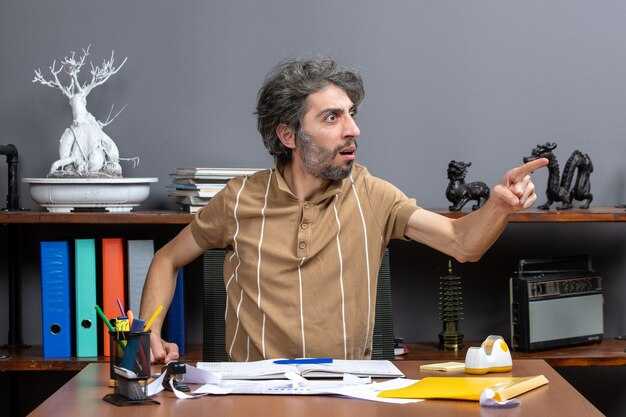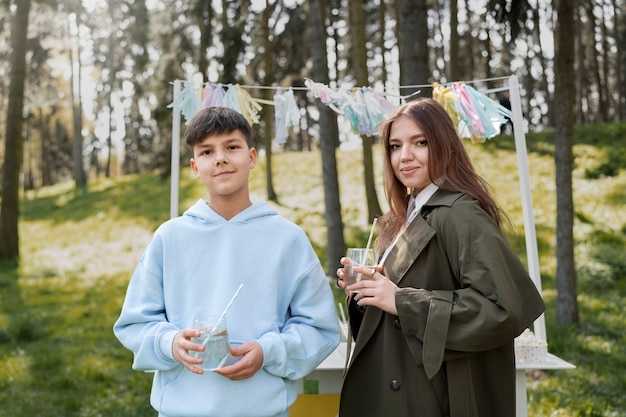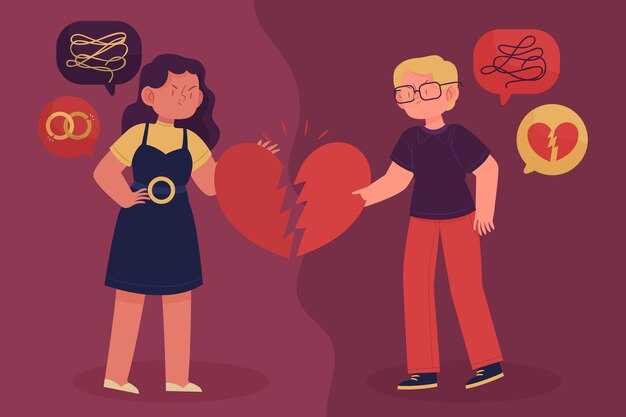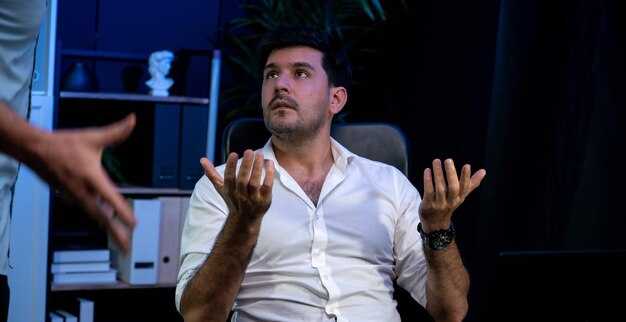There’s a clear and crucial distinction between beneficial stress and harmful stress — and the main difference lies in duration, intensity and timing. Beneficial stress is short-lived, appropriately dosed and often invigorating; harmful stress, by contrast, is excessive and persistent. Mental illnesses, including complex PTSD, are increasingly being linked to metabolic health, and that connection has captured my attention lately. I recently had the pleasure of speaking with Jeff Krano, founder and CEO of Commune and author of Good Stress: The Health Benefits of Doing Hard Things. When I first heard the title, I admit I thought, aren’t we supposed to rest and be gentle with ourselves? But after reading his book, I was struck by how closely the drivers of chronic physical disease align with the lived experience of adults carrying childhood trauma — the symptoms and trajectories look very similar. I had so many questions for Jeff, and here he is. “Jeff Krano, welcome to the Crappy Childhood Fairy.” “Great to be here — thanks for inviting me,” he replied. I told him I was surprised by how relevant his ideas were to those of us with early trauma, because the chronic-disease symptoms he describes as arising from what he calls “the big max” and from a culture of chronic ease mirror what it looks like to live with long-term trauma. He agreed — and I asked him to outline the nutshell premise of his book, since I hadn’t expected it to speak so directly to trauma survivors. Jeff explained that his adult life has been largely spent in the health and wellness world: he co-founded Wanderlust, an ambitious events company that brought leading yoga and mindfulness teachers to audiences around the globe. But about five or six years ago his own health took a sharp downturn. He began experiencing the common, subtle ailments of modern life — brain fog, constant fatigue, insomnia, poor concentration, irritability, compulsive phone-checking — symptoms we’ve normalized as if they were ordinary. Physically he noticed changes too: weight gain around the middle, changes in chest shape, and small lumps under his arms and at the base of his neck — signs he later learned were linked to insulin resistance. Then reality hit: he was diagnosed with diabetes and, like roughly 93% of Americans, was metabolically dysfunctional. That diagnosis moved him from curiosity to urgent necessity; he had to investigate why his health had collapsed and, by extension, why modern life seems to produce so much chronic illness. This inquiry led him to a provocative thesis: much chronic disease stems from “chronic ease” — a way of living that repeatedly subverts our biology. I’ve heard similar ideas from other thinkers (I’m a fan of Casey Means, for example) and I’ve noticed how quickly fundamental changes in diet and sleep can improve how I feel. But as a founder managing companies, and as someone with early trauma, I can slip off track suddenly: stress makes me vulnerable. Before I learned methods to soothe my nervous system — long before the language of nervous-system regulation was common — I suffered asthma, chronic back pain, digestive trouble, and relentless migraines in my thirties. Once I learned a few practical practices to calm my nervous system, many of those health problems improved dramatically; injuries and ailments that previously would not heal began to resolve. That’s why I was so curious about Jeff’s phrase “chronic ease”: in some odd way, an overly easy life becomes stressful. Jeff elaborated that we need to change how we conceive of “ease.” The image we often summon — reclining on a perfectly climate-controlled sofa at 72°F, bingeing shows with a plate of convenience food — might feel immediately comforting, but it can be a short-term anesthetic that masks dissatisfaction and accelerates long-term illness. The kind of ease that nourishes us is different: it’s the deep, effortless absorption we experience when time disappears during a creative task, when the self’s grip loosens and we lose the narrow “me”-focus. We also feel that ease when we do meaningful work with others — from shared projects to rich dinner-table conversations — or when athletes enter a flow state in which body, space and time align. He used a simple metaphor: a supermarket tomato grown with ethylene gas tastes flat, while a homegrown summer tomato — which required tedious, attentive care such as tending soil and pruning — is vibrant and luscious. That richer reward required inconvenience and effort, but it’s the kind of “ease” that sustains. I asked Jeff what triggers flow for him. He said tennis, amateur piano, and a latent banjo instinct — activities done purely for the activity itself, without fixation on outcomes. He describes fleeting moments on the tennis court when his anticipation is so keen he senses his opponent’s shot before it happens; in those instants he’s not merely Jeff, he’s the whole play, a conduit of something larger than the conscious self. He referenced research on flow and spoke of ancient metaphors — the Buddha’s Indra’s net, Japanese aesthetics and African notions like ubuntu — all pointing to a sense that we are fundamentally interdependent. That felt connection, he argued, is profoundly healing: many people with early injury suffer a core wound of disconnection, and recovery often begins when we experience belonging and the sense that we matter in a network of life. Jeff went on to describe how the narrow “clutch” of fight-or-flight — the muscular tension and hormonal surge that intensifies the feeling of “me” as separate — keeps people trapped in a state of constant alert. Nervous-system regulation practices restore centeredness and widen the aperture of attention so trust and connection can return. He acknowledged both biochemical explanations (neurotransmitters and hormones) and psychological/spiritual ones, and emphasized that tools for returning to balance vary: therapy, meditation, somatic approaches, writing before meditation to quiet a busy mind, and more. He explained trauma in concise terms: early trauma can make it hard to process thoughts and feelings, which then remain charged; healing means transforming those charged memories into neutral, retrievable memories — a process that often requires repeated practice but can also produce rapid, hopeful change. During the conversation we discovered shared professional overlaps: we’re both Hay House authors and I’ve followed Commune’s offerings for years. I complimented him on creating a life and workplace that now seem enlivening after the punishing stress of earlier executive roles. Jeff reflected that his career arc was shaped by following partners and passions — notably his wife Skyler — into founding Wanderlust, but that he had also tethered his identity tightly to his CEO role. He described a childhood of continual moves — a dozen homes by age seven — and the adaptive behaviors that followed: heavy people-pleasing, rapid assimilation to new cultures and accents, constant striving for belonging. Those early patterns persisted into adulthood: relentless work, 200 days of flying a year, 16-hour workdays, coping with caffeine and alcohol, and eventual physical breakdown. Much of his recovery involved dismantling the old story he told about himself — the chubby child destined to be unliked — and realizing change and a new identity were possible. On metabolism, Jeff challenged the common belief that metabolism is a fixed trait you “have,” comparing it to an ugly sweater in your closet. After interviewing hundreds of doctors over several years, he argues metabolism is a dynamic, ongoing process: genetics play a small role, while the body’s function changes in response to environment and behavior. Between ages 20 and 60, he notes, metabolic decline is minimal; what shifts is our daily exposome — the totality of environmental inputs, from food and air to movement and relationships — which is the dominant driver of chronic conditions like diabetes, heart disease, cancer and dementia. The exposome concept (a term Jeff first encountered from Mark Heyman) underscores that genes matter but don’t fully determine outcomes; many levers remain in our control, allowing us to alter disease trajectories. That’s an empowering realization: change is not only possible, it’s the constant state of our bodies and selves — we are collections of atoms and endless chemical reactions, always in flux. In support of the exposome idea, Jeff mentioned research showing how maternal stress during events like the Montreal ice storm was associated with metabolic predispositions in children born after the crisis — a reminder that prenatal stressors produce hormonal and epigenetic changes with long-term consequences. We discussed how this matters for mental health too: traumatic events are cemented by neurochemical spikes (adrenaline, cortisol) and become the memories that dominate our narrative. I returned the conversation to practical interventions: what can a person do to support metabolism? Jeff described three protocols he adopted — what he calls “good stress” practices that mimic the environmental challenges humans adapted to over millennia. First, time-restricted eating (consolidating food into an eight-hour window) to introduce intermittent calorie scarcity; second, cold exposure (cold plunges or ending showers cold) to stimulate thermogenic processes; and third, resistance training to build muscle. He recommended experimenting carefully and adapting to sex, age and individual responses, but offered his own cadence: because he combined a low-glycemic diet with a 15½-hour fast, he would cold-plunge before his first meal. A modest cold exposure is often sufficient — it doesn’t require extreme ice baths at 34°F; even a 58–60°F plunge or a cold finish to a shower can be effective. The cold lowers core temperature and forces the body to generate heat; if carbohydrates are scarce, mitochondria turn to stored fat, oxidizing triglycerides to produce warmth. For Jeff that protocol — fasting, cold exposure, resistance training and low glycemic intake — produced dramatic weight loss: roughly 65–70 pounds over three to four months. He’s seen cold showers work for many people and cautioned against leaping straight to extremes; the point is to nudge the organism back into engaging its evolved homeostatic mechanisms — shivering, sweating, thermogenesis — which are dormant in our modern thermoneutral, comfort-controlled lives. These intermittent challenges enhance physiological balance just as psychological practices restore mental balance. Good stress, he summarized, is acute and dose-appropriate; bad stress is overwhelming and chronic. The rattlesnake analogy is useful: in a natural encounter, the surge of fight-or-flight protects you, and once danger passes you return to homeostasis. Modern life, through endless news cycles, social media algorithms designed to keep us agitated, economic strain and social cruelties, often keeps the rattlesnake coiled at our feet, stretching physiological stress into a perpetual state that damages health. We must therefore learn to reframe stress, use short, controlled stressors to build resilience, and develop emotional regulation skills to tame chronic activation. We also touched on the interplay between metabolic and mental illness: the relationship is bidirectional and profound. Traumatic hormones and neurotransmitters shape long-term physiology; conversely, metabolic dysfunction influences mood and cognition. That mutual influence explains why interventions targeting metabolism — nutrition, sleep, cold exposure, exercise — can have meaningful effects on mental health diagnoses, and why treating trauma through somatic, psychotherapeutic or regulatory techniques can improve physical outcomes. Toward the end of the interview I mentioned family experiences with severe mental illness, the pandemic’s stressors and the way generations of small, chronic traumas and lifestyle shifts (heavy cannabis use, “carbicide,” lockdowns) pushed many people to the edge. Jeff agreed: gene expression is not deterministic; environmental exposures and lived stressors influence whether predispositions become active. He reiterated that resilience grows from encountering and metabolizing stress in calibrated ways — stress that challenges without destroying, stress that builds capacity rather than breaking the organism. Before we wrapped, Jeff shared where listeners could learn more. He’s published Good Stress and the book’s hub is at goodstress.com, where readers can find the book and related materials. His principal work is building Commune, a learning platform for wellbeing that hosts courses and retreats with luminaries (he cited names like Mark Heyman, Casey Means, Zack Bush and Gabbor Mate) and serves as a repository of their teaching; the platform is reachable at onecom.com and is anchored by a retreat center in Tanga. He distilled his own work as a synthesis of wisdom gathered from those teachers and experiences. We closed with mutual appreciation — an offer to continue the conversation on his podcast and an invitation to visit the retreat center. “If you can handle Skyler,” he joked, “you’ll have truly encountered a bit of good stress.” The exchange left me personally energized and hopeful: when people are knocked down by overwhelming times, there are realistic, embodied ways forward — small changes that can return you to function, connection and joy.



 Why Doing HARD THINGS Helps You Heal, with Jeff Krasno, Founder of Commune">
Why Doing HARD THINGS Helps You Heal, with Jeff Krasno, Founder of Commune">

 How to Rewire Your Mind & Stop Negative Thoughts When An Avoidant Is Silent | Mel Robbins Motivation">
How to Rewire Your Mind & Stop Negative Thoughts When An Avoidant Is Silent | Mel Robbins Motivation">
 Believing This Myth Will Hurt Your Relationship">
Believing This Myth Will Hurt Your Relationship">
 She’s your partner NOT your parent || Relationships aren’t Self-Centered">
She’s your partner NOT your parent || Relationships aren’t Self-Centered">
 Your Affair is Over But The Damage Is Still There">
Your Affair is Over But The Damage Is Still There">
 How to Become Emotionally "Sober" (4-video compilation)">
How to Become Emotionally "Sober" (4-video compilation)">
 Is your partner allowed to look at your phone?">
Is your partner allowed to look at your phone?">
 Never Ignore These 10 Relationship Red Flags…">
Never Ignore These 10 Relationship Red Flags…">
 Childhood Trauma Breaks You Down. Here’s How to Heal Your Spirit">
Childhood Trauma Breaks You Down. Here’s How to Heal Your Spirit">
 Why You’re Addicted to People Who Don’t Want You">
Why You’re Addicted to People Who Don’t Want You">
 The Worst Rejection a Dismissive Avoidant Experiences… When You Finally Go Silent">
The Worst Rejection a Dismissive Avoidant Experiences… When You Finally Go Silent">